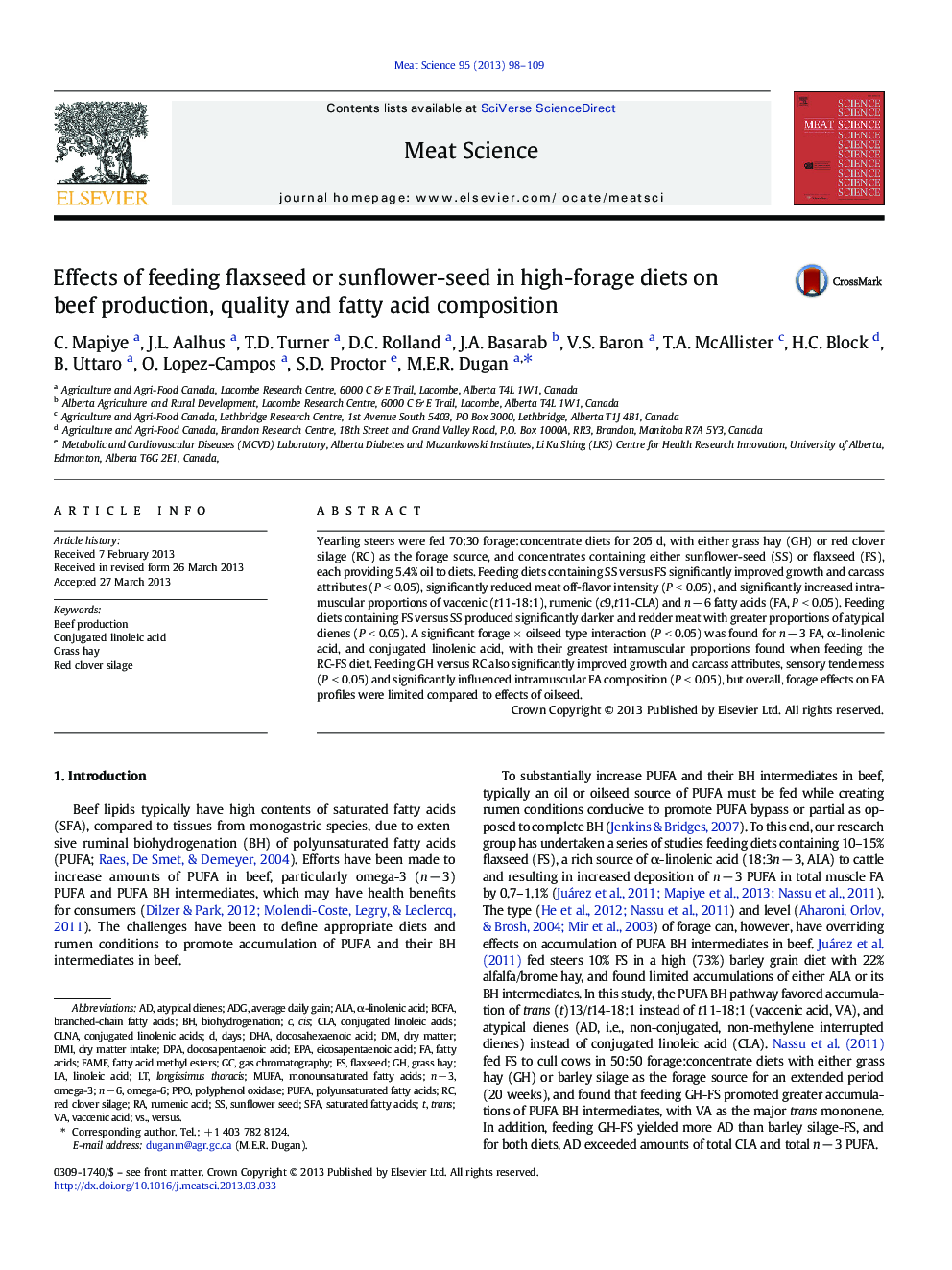| Article ID | Journal | Published Year | Pages | File Type |
|---|---|---|---|---|
| 5792319 | Meat Science | 2013 | 12 Pages |
â¢Feeding sunflower-seed versus flaxseed enhanced beef production and sensory quality.â¢Feeding sunflower-seed increased the proportions of vaccenic and rumenic acids.â¢Red clover silage-flaxseed diet yielded the greatest proportions of n â 3 fatty acids.â¢Feeding flaxseed negatively affected beef flavor.â¢Feeding grass hay improved beef sensory tenderness.
Yearling steers were fed 70:30 forage:concentrate diets for 205 d, with either grass hay (GH) or red clover silage (RC) as the forage source, and concentrates containing either sunflower-seed (SS) or flaxseed (FS), each providing 5.4% oil to diets. Feeding diets containing SS versus FS significantly improved growth and carcass attributes (P < 0.05), significantly reduced meat off-flavor intensity (P < 0.05), and significantly increased intramuscular proportions of vaccenic (t11-18:1), rumenic (c9,t11-CLA) and n â 6 fatty acids (FA, P < 0.05). Feeding diets containing FS versus SS produced significantly darker and redder meat with greater proportions of atypical dienes (P < 0.05). A significant forage Ã oilseed type interaction (P < 0.05) was found for n â 3 FA, α-linolenic acid, and conjugated linolenic acid, with their greatest intramuscular proportions found when feeding the RC-FS diet. Feeding GH versus RC also significantly improved growth and carcass attributes, sensory tenderness (P < 0.05) and significantly influenced intramuscular FA composition (P < 0.05), but overall, forage effects on FA profiles were limited compared to effects of oilseed.
